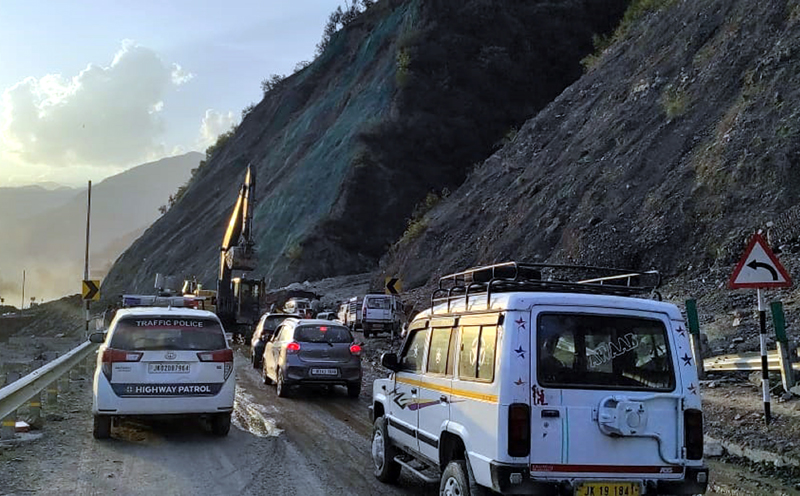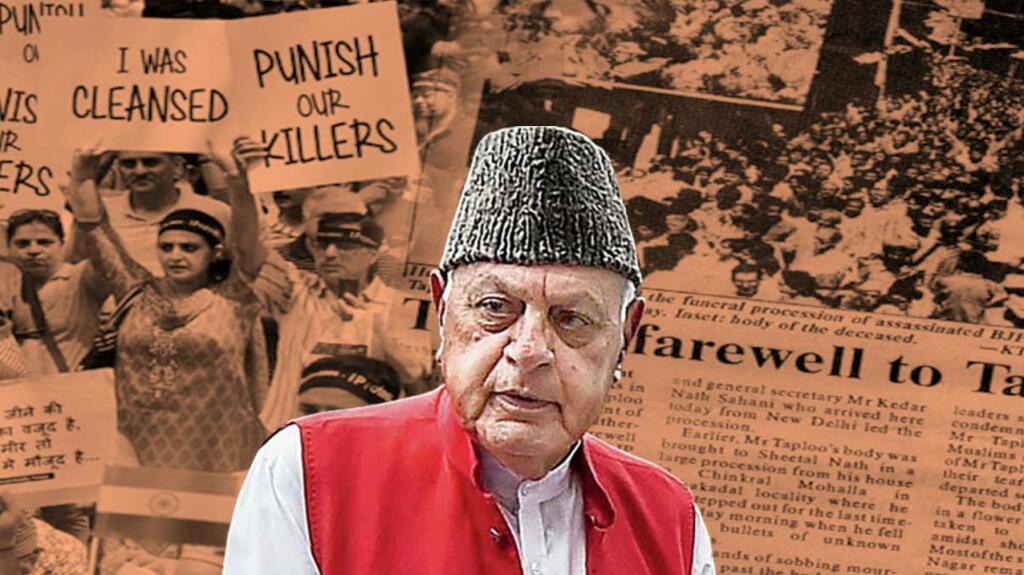Highway Hiccups: Slow, Painful, Open, One-Way
By: Javid Amin | 18 September 2025
The Arteries of Life Under Strain
In the heart of the Himalayas, Kashmir’s highways are more than roads—they are lifelines. They connect orchards to markets, patients to hospitals, tourists to resorts, and families across towns and villages. Yet, for months, these lifelines have been in turmoil.
From Srinagar to Banihal, Baramulla to Kupwara, arterial routes are riddled with bottlenecks, one-way diversions, and half-finished stretches that have transformed everyday travel into a test of endurance. In September 2025, commuters, traders, and political leaders alike are voicing frustration over the inability of the government to restore smooth, reliable connectivity.
The NH-44 Blockade: A Corridor of Havoc
The Srinagar-Jammu National Highway (NH-44) is Kashmir’s economic lifeline. Its partial closures due to landslides, delayed repairs, and administrative bottlenecks have had far-reaching consequences:
-
Over 5,000 trucks carrying apples remain stranded across the valley.
-
Wholesale fruit mandis in Sopore, Shopian, and Anantnag have shut down in protest.
-
Patients traveling for medical care, school students, and tourists face hours-long delays.
MP Aga Ruhullah voiced his concern at a recent press briefing from the Shopian fruit mandi:
“Our country claims to be a five trillion economy, yet our fruit is being stopped on the highway. This is unjustified and discriminatory. Growers may be forced to protest if the situation continues.”
Similarly, Sajad Lone, Peoples Conference president, criticized the administration for inaction:
“Inclement weather is not the fault of the government. But sitting like a mute spectator and doing nothing is criminal.”
A History of Broken Promises
Kashmir’s road woes are not new. NH-44 has historically faced:
-
Frequent landslides at Tharad, Banihal, and Ramban.
-
Incomplete widening projects, leaving one-way traffic on half-dug shoulders.
-
Tunnel delays, including Qazigund–Banihal and Sangam tunnels, which were designed to bypass landslide-prone areas but opened only partially.
Former CM Omar Abdullah has repeatedly highlighted the failures of project coordination:
“The highway is being touted as strategic, yet basic traffic flow and logistics for local produce remain unaddressed. This is more than infrastructure—it’s governance at stake.”
Economic Fallout: Apples, Mutton, and Tourism
Apples on the Brink
Kashmir’s apple industry is the lifeblood of its rural economy. NH-44 disruptions have left:
-
Over 20 lakh metric tonnes of apples stranded.
-
Losses exceeding ₹1,200 crore in spoilage and unsold produce.
-
Mandi closures in Sopore and Shopian, halting trade entirely.
Traders demand: dedicated apple corridors, better cold storage facilities, and transparent logistics from rail and road authorities.
Mutton and Essentials
The highway also impacts essential supplies. Local media reported:
-
Mutton shortages affecting weddings and markets.
-
Rising retail prices of vegetables and pulses due to delayed supply chains.
-
Panic buying at petrol pumps, even though Divisional Commissioner Anshul Garg clarified:
“There is no shortage of fuel in the Valley. While NH-44 is under restoration, essential commodities are well-stocked.”
Tourism Under Siege
Tourism, Kashmir’s second-largest employment sector, suffers severely from road closures. Hotels, guesthouses, and transport services report occupancy declines of 40–60% in affected areas.
-
Former CM Omar Abdullah publicly criticized the industry for not supporting his promotional efforts abroad, particularly in the wake of the Pahalgam terror attack.
-
Closed destinations like Drang, Doodhpathri, Yusmarg, Tosa Maidan, Aaru, and Betab Valley make promotion efforts contradictory, undermining trust in the government’s messaging.
Political Voices and the Accountability Gap
Multiple leaders have weighed in:
-
Tarigami (CPI-M): “Promotional tours are not enough. Unless infrastructure and safety improve, tourists will not return sustainably.”
-
Mehbooba Mufti (PDP): “Road connectivity is not just about convenience; it is about livelihood. Delays are pushing families into debt and despair.”
-
Sajad Lone (PC): “Tourism and horticulture are suffering due to selective attention and bureaucratic apathy.”
From the LG administration’s side, officials cite:
“Weather conditions, terrain, and unforeseen landslides are primary reasons for intermittent closures. Restoration works are ongoing.”
The public, however, perceives apathy and selective enforcement, fueling mistrust and anger.
The “One-Way” Metaphor
Beyond traffic management, “one-way” has become symbolic:
-
Unilateral governance: Decisions made without consulting affected communities.
-
Economic strangulation: Farmers, traders, and daily wage workers bear the brunt.
-
Social frustration: Locals see VIP convoys prioritized over essential traffic.
This one-way approach affects not just roads, but Kashmir’s social and economic fabric.
Comparative Analysis: Lessons from the Himalayas
-
Ladakh: Seasonal road closures mitigated by alternate routes, pre-stocked supplies, and real-time traffic monitoring.
-
Himachal Pradesh: Tunnel networks and public dashboards reduce disruption impact.
-
Uttarakhand: Community engagement in road maintenance and rapid-response landslide teams improve trust and reduce panic.
Kashmir’s authorities can adapt similar proactive, transparent, and community-focused measures.
Solutions: From Reactive to Proactive
Experts recommend:
-
Public dashboards for project timelines and traffic updates.
-
Dedicated emergency lanes for hospitals and essential goods.
-
Seasonal audits before winter to anticipate landslides.
-
Community consultation to prioritize local needs.
-
Accountability frameworks for contractors and agencies.
-
Integration with tourism and horticulture logistics to prevent economic collapse.
Conclusion: Beyond Asphalt, Beyond Politics
Kashmir’s highways are more than roads—they are symbols of survival, dignity, and economic lifelines. Every delay, closure, and bottleneck echoes through orchards, guesthouses, hospitals, and homes.
Political leaders, bureaucrats, and the public must recognize that fixing highways is not just an engineering task, but a moral obligation. Until then, the Valley will continue moving slowly, painfully, and often in just one direction—a direction shaped as much by governance failures as by terrain.


